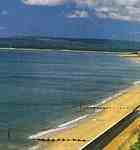
| BOURNEMOUTH has long been famous for its miles of clean, safe sandy beaches, marvellous shops, restaurants, cinemas, theatres and nightlife.At Wrenwood Hotel you are only 400 yards or less than 2 minites' drive from the Sea and on the golden sands. There are excellent facilities for golf, bowls, tennis, sea and river fishing, sailing, wind surfing, squash, badminton, ten-pin bowling and much more. We have indoor leisure pools, ice-skating, Splashdown at Tower Park, Christchurch Ski centre and indoor bowls at King’s Park, all within fifteen minutes’ drive and the Conference Centre offers a host of regular events. The area around Bournemouth offers a wide range of sight-seeing opportunities for our visitors, countryside pursuits as well as shopping facilities. Further information may be obtained from other pages on this Internet Site. |  |
|
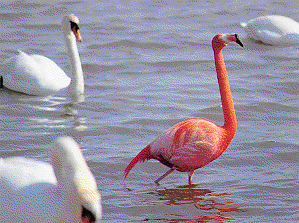 |
Lying in a sheltered green valley, Abbotsbury is a quiet place of honey-coloured stone cottages, many thatched with reeds from the nearby Fleet Lagoon. Only scant remains of the mediaeval abbey remain with some mediaeval masonry in the walls of the village houses; but the chapel and tithe barn with its great, buttressed gable are impressive reminders of past glories. Abbotsbury is noted for its fine subtropical gardens and ancient swannery. Hundreds of wild mute swans nest in The Swannery, a marsh at the head of the Fleet Lagoon. Palm trees, eucalyptus, accacias and bamboos are among tropical plants flourishing in the Gardens just to the West of Abbotsbury. During the spring and summer the sheltered gardens are ablaze with Camellias, Magnolias and Roses. |
| The country house Athelhampton, on the A35 00miles away retains a happy air of what it has been for 500 years a private family home albeit in the grand manner. Built in 1485, when Henry VII ascended the throne, it illustrates the new style of architecture heralded by the coming of peace at the end of the Wars of the Roses. The Great Hall is among the finest examples of 15th century domestic architecture in the country and the English furnishings, paintings and other treasures dating from the 14th century remain in their original settings. Strolling in the formally laid-out gardens, catching glimpses of the ancient manor’s gables, it is not hard to recognise the pleasure that five centuries of Athelhampton’s owners must have derived from this beautiful place. | 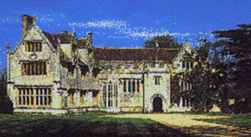 |
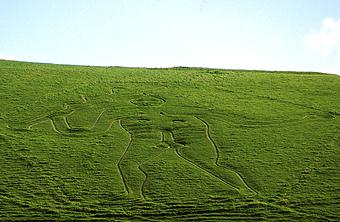 |
Cerne Abbas and the Giant
The 10th Century Benedictine abbey that once dominated the village is now
recalled only by the scant ruins of a gatehouse added in the 15th Century.
Much more ancient is the celebrated Cerne Abbas Giant – the 180 ft, club-wielding
naked man cut starkly into the chalk of the hillside just north of the
village, believed to be 1,500 years or more years old.
In the centre of Christchurch is Christchurch Priory, the construction of which spanned 450 years. Founded in 1094, it has a superb Norman nave and transepts. The church measures 311 feet from East to West and is the longest parish church in the whole of England. North of the church, high on a mound, stand the ruins of Christchurch Castle’s once massive keep, built around 1100 with walls 9 feet thick! |
| Clouds Hill It was on his
way home to this cream-coloured cottage on a motorbike, that Lawrence of
Arabia (T. E. Lawrence) was killed. It has been preserved just as
he had left it – an intimate memorial to an enigmatic soldier and author.
Pagodas, arched bridges, temple and tea-house blend har-moniously with the beautiful and mature specimen trees and plants of the Japanese garden of Compton Acres at Canford Cliffs, Poole. The formal Italian gardens, symmetrically arranged around a lake and decorated with fine statuary, is framed by the colour of a thousand rose buses. There is also a rock and water garden with carp-filled, lily-covered pools and a subtropical glen of exotic palms and shrubs. Corfe Castle is everything an ancient castle should be: its 12th century keep and massive outer fortifications are steeped in history with kings not only being born but imprisoned and murdered there too. It was to this Saxon royal castle that the teenage King Edward came to visit his half-brother Ethelred and was assassinated by his young host’s ambitious mother. Hardy’s Cottage Lying just
off the A35, three miles north of Dorchester and crouching low under a
handsome thatch. It was in the garden of this cottage during the summer
of 1873 that Hardy started to write Far from the Madding Crowd, the novel
that made him famous.
|
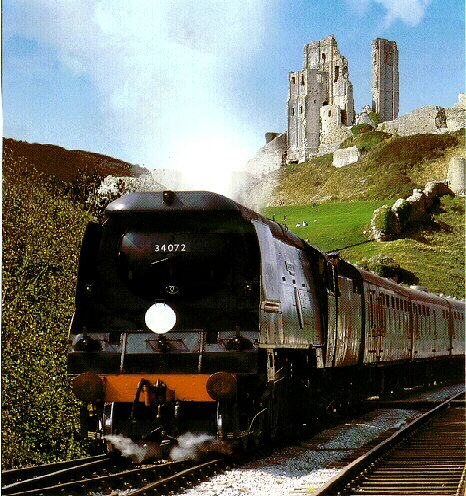 |
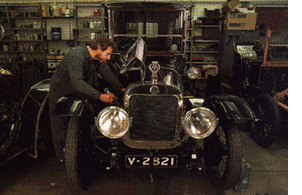 |
The National Motor Museum at Beaulieu displays a century of motoring history in which the Bournemouth visitor can see more than 200 cars such as Donald Campbell’s Bluebird, vintage cars such as the Austin 7 and Rolls Royce Phantom. Many of the Museum's vehicles are in full running order. They leave the Museum for use in their Living History programmes and Summer Cavalcade. At frequent intervals, cars are also sent to historic vehicle meetings, filming or photographic sessions. Any Museum car travelling on the public roads has to have a current MOT certificate. Although older vehicles have some exemptions from modern requirements, the museum has a responsibility to ensure that the vehicle's major systems are in road-worthy condition. Preparing the museum's vehicles for the road is a time-consuming activity particularly when subtle modifications have to be made, like fitting double dipping headlamps to a 1930's vehicle without distorting its original appearance. The workshop keeps a log book for every vehicle, noting all work carried out and anytemporary modifications made. One of the busiest times of the year is the preparation for the Brighton Run. |
| Parnham Sir Arthur Conan
Doyle, awoken by the baying of the hounds during a night’s stay at Parnham
is said to have been inspired by the sound to write his classic The
Hound of the Baskervilles. The lovely grounds at Parnham include formal
terraces, riverside walks and picnic areas where kingfishers, dippers and
wagtails may be glimpsed.
Poole Harbour has served for centuries as a seafarer’s sanctuary from storms and today the port offers many all-weather attractions to shore-bound visitors. These are concentrated along the quay – still very much a working waterfront for commercial vessels as well as leisure craft – and in the splendidly preserved old town that lies behind it. The nearby Poole Pottery is an heir to a local tradition for the craft dating from Roman times and has a museum, video displays and demonstrations of pottery painting. |
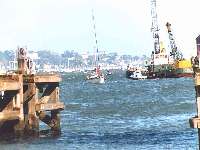 |
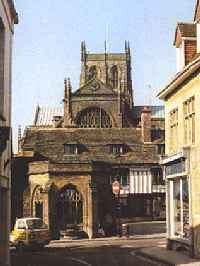 |
Sea Life Centre, Weymouth
Here conger eels and Leopard sharks loom large in the aquarium complex,
where a major attraction is the ocean tunnel, a walkway surrounded entirely
by the glass of a huge tank shimmering with shoals of fish. An even closer
acquaintance with marine life is offered by the shallow "touch" pools,
where visitors can scramble over rocks in search of crabs, shrimps and
sea anemones.
Sherborne Abbey The golden Ham Hill sandstone of Sherborne’s beautiful mediaeval buildings has its most sublime use in the Abbey built between the 12th and 15th centuries. In the cathedral-scale nave, ingenious mobile mirrors give a thrillingly detailed view of the exquisite fan-vaulted ceiling overhead. Close to the abbey are its almshouses, set in a tiny cloistered courtyard. Swanage Railway Steam trains are again plying the century-old track that once linked the seaside town of Swanage with Corfe Castle. Passengers travel in nostalgic style on 25 minute round trips to Harman’s Cross Halt, through some glorious Purbeck countryside. Tank Museum A massive 48-ton Centurion tank cut in half along its length is one of more than 180 armoured vehicles on display here. They date from the first true tank built in 1915 and include World War II veterans such as Shermans and Germany’s awesome Tiger with its massive 128 mm gun. |
| Wimborne Minster holds a library
of ancient books, each chained to prevent theft; an astronomical clock
that predates the astronomer Copernicus and a Saxon treasure chest more
than a thousand years old. The Minster dates from the 1100s and has a Quarter
Jack – a carved figure brightly painted as a grenadier which strikes a
pair of bells every quarter hour. There is also a superb organ with trumpet
militaire pipes which sound out facing the congregation.
Worldwide Butterflies Close encounters with the world’s most exotic insects await visitors to Compton House. The gardens, specially planted to provide ideal butterfly habitats, are alive with countless British species in summer. And in the house’s handsome panelled rooms there are many more to be seen. The first floor of Compton House is the home of the Lullingstone Silk Farm which has produced silk for the bridal dresses of several royal weddings, including that of the late Diana Princess of Wales in 1981. |
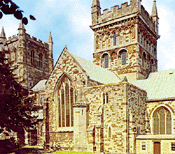 |
| Back to the Home Page |
|
What's Gay in Bournemouth | Wrenwood Hotel Wine List |
|
|
|
Page Created Seeve 99-05-13